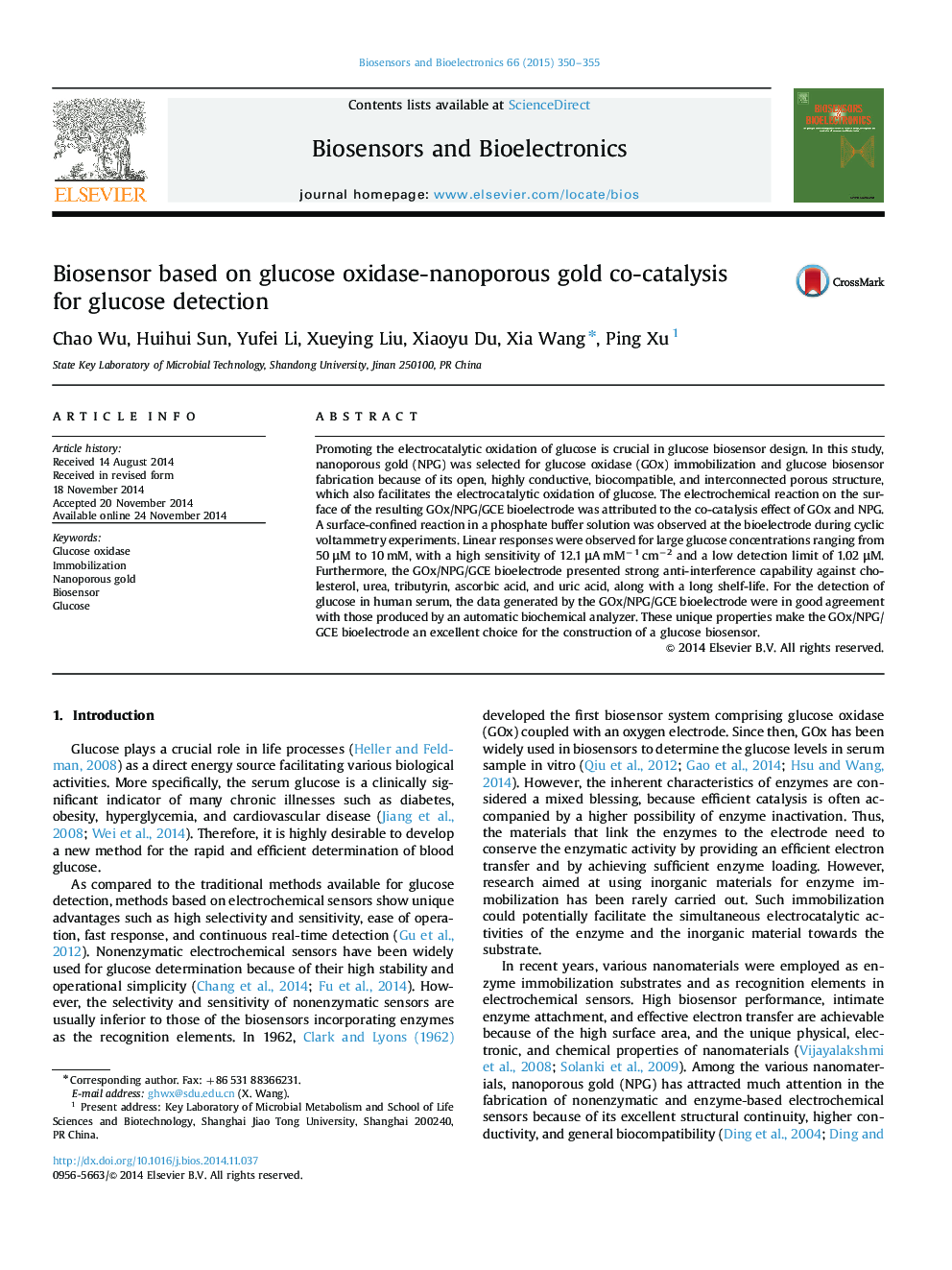| Article ID | Journal | Published Year | Pages | File Type |
|---|---|---|---|---|
| 7232724 | Biosensors and Bioelectronics | 2015 | 6 Pages |
Abstract
Promoting the electrocatalytic oxidation of glucose is crucial in glucose biosensor design. In this study, nanoporous gold (NPG) was selected for glucose oxidase (GOx) immobilization and glucose biosensor fabrication because of its open, highly conductive, biocompatible, and interconnected porous structure, which also facilitates the electrocatalytic oxidation of glucose. The electrochemical reaction on the surface of the resulting GOx/NPG/GCE bioelectrode was attributed to the co-catalysis effect of GOx and NPG. A surface-confined reaction in a phosphate buffer solution was observed at the bioelectrode during cyclic voltammetry experiments. Linear responses were observed for large glucose concentrations ranging from 50 μM to 10 mM, with a high sensitivity of 12.1 μA mMâ1 cmâ2 and a low detection limit of 1.02 μM. Furthermore, the GOx/NPG/GCE bioelectrode presented strong anti-interference capability against cholesterol, urea, tributyrin, ascorbic acid, and uric acid, along with a long shelf-life. For the detection of glucose in human serum, the data generated by the GOx/NPG/GCE bioelectrode were in good agreement with those produced by an automatic biochemical analyzer. These unique properties make the GOx/NPG/GCE bioelectrode an excellent choice for the construction of a glucose biosensor.
Related Topics
Physical Sciences and Engineering
Chemistry
Analytical Chemistry
Authors
Chao Wu, Huihui Sun, Yufei Li, Xueying Liu, Xiaoyu Du, Xia Wang, Ping Xu,
